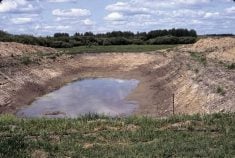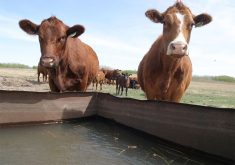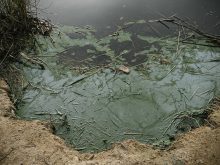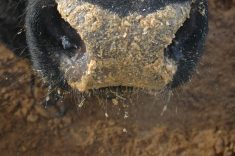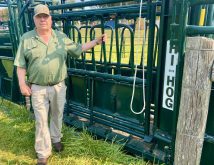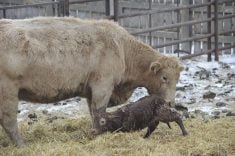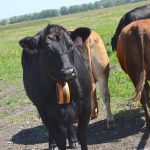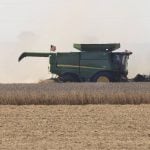A former livestock specialist says insufficient water intake reduces an animal’s performance faster than any other nutrient deficiency
Many cattle producers don’t adequately consider the importance of providing quality water to their animals, said a livestock and forage consultant.
“It’s the one that’s missing more than not, when I run into troubles, is people do not know what their water quality is,” said Barry Yaremcio of Yaremcio Ag Consulting in Stettler, Alta.
Added Leah Clark, a former livestock specialist with Saskatchewan Agriculture who spoke during a webinar organized by the Beef Cattle Research Council: “Water is the most important essential nutrient. I’ve often times referred to it as the forgotten nutrient.… Limiting water availability to cattle will depress production rapidly and severely, so poor quality drinking water is often a factor in limiting intake. Often times, I don’t think we necessarily address this.”
Water comprises 50 to 80 percent of an animal’s live weight and insufficient intake reduces performance faster than any other nutrient deficiency.
“It sets up a chain reaction across the board,” said Yaremcio.
Lack of good quality water limits nutrient absorption, feed intake, weight gain, milk production, fertility and temperature regulation in cattle.
Improving water quality and reducing total dissolved solids increases water and feed consumption.
“If an animal is not able to drink the required amount of water, then feed intake is reduced. If this is a lactating cow, she cannot produce as much milk and the calf does not grow as well as it should,” said Yaremcio.
A cow not consuming as much feed will pull extra energy from back fat, resulting in lost weight and lower milk production.
“A rule of thumb that I use is, if a cow doesn’t get enough energy in early lactation, when she pulls off a pound of fat from her back to produce milk, one lb. of fat will provide enough energy to produce seven lb. of milk,” he said.
If that cow was losing weight between calving and breeding season, it’s more difficult for it to conceive.
Lack of good clean water also impacts calves.
“Even though you’ve got a calf that’s getting milk from the cow, it still needs a certain amount of water to keep metabolic functions going and the cells hydrated so they remain healthy,” Yaremcio said.
Bulls are also affected, especially during breeding season when it matters most.
“If the bull doesn’t get enough water, especially if they’re summer breeding, it will have an increase in body temperature. Cattle can’t sweat, but water helps regulate temperature.
“So if that bull doesn’t get enough water and good quality water, there’s a chance that he won’t be as active on the pasture,” said Yaremcio.
“If the body temperature of a bull goes up by about two degrees, no different than having a fever, then the extra heat can damage the sperm. The bull may go ahead and do his work as necessary, but the cows can’t conceive because the sperm are usually either damaged or dead.”
Several studies have compared the quality of dugout water with using a pumping system.
In one such study, cow-calf pairs were allowed free access to a dugout’s water while another group was fenced off from the dugout and supplied with water via a tank and pumping system.
“In 30 days, the lactating cows from the dugout basically lost two-tenths of a kilogram, so they maintained their weight,” said Yaremcio.

“The ones that drank out of the watering system had 7.4 kilos more weight, or the difference between the two was 7.4 kilograms.
“Then for the same time, they weighed the calves and they saw a 10.3 kilogram increase in weight gain for the calves that were drinking from the tank or water system, and not going to the dugout.
“That’s three-quarters of a pound difference in weight gain a day.”
A 2005 study reported that calves with access to clean pumped water were on average 18 lb. heavier at weaning.
Another study found that calves from cows that drank clean water gained nine percent more weight than calves with dams that had direct access to the dugout.

A similar study with steers on pasture found they gained an additional .75 lb. a day (44 pounds total) more than the control group with untreated pumped dugout water versus direct dugout water.
Yaremcio said producers should know of the subtle differences in pregnancy rates or the amount of weight gained. Adequate amounts of quality water can improve conception rates in the entire herd.
“With things getting tighter and tighter and the guys looking at production efficiencies, that three or four percent difference in open cow rate is making a big difference in their bottom line.”
Water system calculators help estimate the potential economic benefits and costs of alternative watering systems compared to direct access to dugout water.
Several commercial labs are available to test water quality.
Alberta Agriculture, CowBytes and regional agricultural specialists are also good sources of information about water quality.
According to the BCRC, recent producer surveys show most Canadian farmers need to test water more often. In Western Canada, 59 percent of producers reported they don’t test their water, and only 17 to 41 percent of Quebec and Ontario producers reported testing water once every five years.




